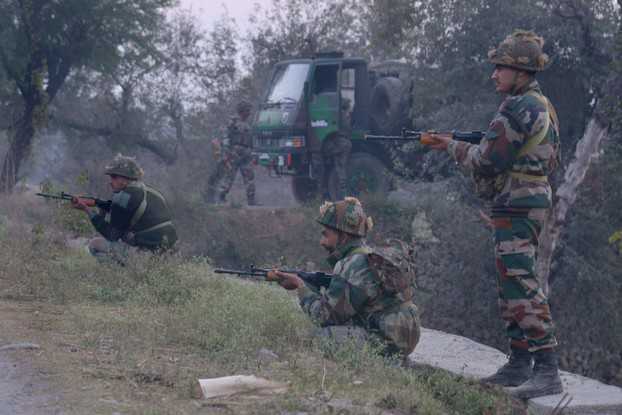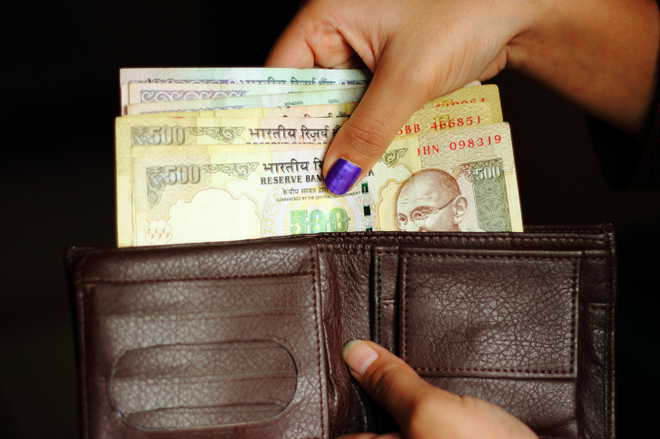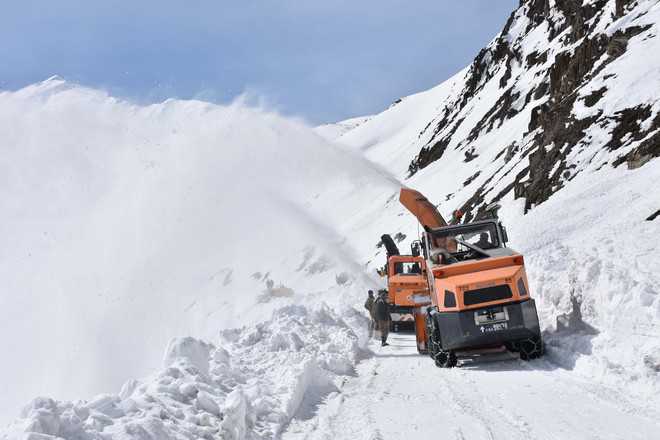Sitting somewhere in Islamabad or elsewhere in Pakistan and in fact in many other places where India’s adversaries exist and monitor our social media, television and print media, there must be considerable mirth and much joy. A look at the way in which the 7th Pay Commission recommendations have ignited the civil-military divide in India and brought out the entire issue in the public domain must really be a finger-licking moment for our adversaries. Pakistan’s Inter Services Public Relations (ISPR), who I always praise to high heavens for its complete professionalism, would probably in its Monday brief state that it is holiday time; the target is in self-destruct mode.
Sunday night’s program, ‘We the People’, on NDTV on 20 Mar 2016, on the 7th Pay Commission recommendations was probably a path-breaking event in the exercise of outreach and sensitization. The ‘us’ versus ‘them’ was out in the open. Right from the Third Pay Commission which saw the reduction of pension and lowering of status (that actually started well before) each such Commission has consciously diluted the military’s standing while the changing environment only added to the responsibilities and expectations from the men in uniform. There is no need to go into history all over again except to mention that the traditional antipathy Nehru had against the Army always colored his judgment. This disdain arose out of three things. First was his belief that pre-Partition, the Army worked for the colonial masters and not for the National movement. Second was his fear that the Army would not remain apolitical and would probably have ambitions of its own. Third remained his utopian idea that India had no enemies and all it needed was a stick wielding police force to manage order.
His perceptions were no doubt reinforced by an ICS oriented civil service who could not have asked for more. The Army leadership was silent and table thumping was not its forte. It never objected to its own virtual disenfranchisement from the national security domain which came to be dominated by the bureaucrat diplomat combine who played on the fears of the political leadership. They assiduously garnered the national security space shutting out all three Services and playing them against each other.
The glorious victory of 1971 created a major dilemma because it was the nation’s victory made possible by the Armed Forces. Adulation among the public was at a high and the personality of senior leaders with ‘spine’ as a major element of their mental makeup was causing concern. It wasn’t a happy situation for the civilian leadership. With this backdrop, since 1972 there has been a systematic campaign to whittle down the image of the Armed Forces and their position. The Pay Commissions could be virtually seen as a means of tying the Armed Forces down with pay being the deciding factor to determine status. With each passing Commission the attempt to complicate the system and leave milestones in forms of unresolved anomalies helped to tie everyone in knots. It’s a great strategy which ensures primacy in pay and status to the civilian while the Armed Forces continue to live and function by their discipline and accountability.
The above was not a narration of history but just a few painful facts which cannot go away from any analysis. Before coming to the actual issues involving pay and status and the arguments of the senior veteran bureaucrats let me reiterate a few things. Decisions which even affect functional efficiency are ignored and just postponed. Would any member of the bureaucracy have an explanation for the 20-year old representation of the Army that the Central Armed Police Forces (CAPFs) must be distinctive from the Army in accoutrements and at least with reference to the disruptive pattern combat dress? The issue finally came to a head in the recent agitation in Haryana where the Army had to suffer the ignominy of using placards to identify itself.
This is not a point by point analysis or debate. Sunday’s NDTV program would have helped clear a few cobwebs but equally add a few more. The one issue no bureaucrat seems to be able to explain is the absence of a representative from the Armed Forces on the Pay Commission. They put up a great argument to say that none of the members represent any service. That is as good as burying your head in the sand. When there is continued obfuscation of issues, anomalies of the past remain unresolved and the largest of the organizations has remained dissatisfied with the Pay Commission system, prudence demands that a fresh approach be followed. This is where the political leadership has to step in, otherwise the continuum of burial of contentious issues under the carpet will only lead to a breakdown of the system.
We earlier had a set of military men who gave great credence to acceptance of the word of the civilian leadership. That is changing faster than the members of the Pay Commission or the political leadership would like to believe or have been informed about. In 2012 the military leadership in good faith opted to continue with the old system of the common pay commission for all, placing confidence in the wisdom of the political leadership. It appears they will live to rue that decision.
The bureaucrats on the panel of the NDTV program tried to confuse and confound with two arguments; first that the government needs to do a cost benefit analysis to compare the cost of upkeep of civilian functionaries and that of servicemen; and second that Service officers rose to high ranks and remained in service long enough to earn like all others. It needed someone to point out to them that the benefit of the cost of upkeep of Service personnel could never be quantified. In fact a visibly upset former Army Chief General VP Malik had to use unusually harsh words to state clearly that it was up to the Government to decide the strength of the Armed Forces and the quantum it could afford for national security. The Cost to Government (CTG) seems to be a carefully adapted strategy by the bureaucracy this time. It probably hasn’t seen the end of the day yet and will emerge again in even the Empowered Committee of Secretaries where the three Services go unrepresented yet again.
The Government has yet to come out with any credible argument on why this has not happened. In making the second argument the bureaucrats forgot about the percentage approval rates for higher ranks. For public consumption it must be known that at first select rank of Colonel 60-70 percent of the officers are unlikely to be promoted. Thereafter at each higher select rank the number dwindles by more than fifty percent. For an original strength of over 800 officers commissioned in 1974 only twenty or so could make it to the three star rank; they thus retired from ages of 54 to 58 with just 20 or so achieving 60. Contrast this with the bureaucrats where each and every entrant retires at 60 years of age and comparative three star rank with many going up to Secretary (four star equivalent). Leave the officer cadre and you have other ranks among soldiers and equivalent where 80 percent retire at 34 to 37 years. Chalk and cheese, apples and oranges is what the bureaucrats spoke of; that there are no ways by which we could find equivalence in environment, promotion opportunities and ages of retirements so why compare wages. In fact a senior JCO in the audience spoke up and asked for assured re-employment till the age of 60 years for all exiting soldiers as a means of resolving all issues. Then the Servicemen would be at par with civilian counterparts and would demand no higher compensation.
Half the problem lies in the lack of knowledge among the political class. Worthies should know that military security cannot be wished away; equally a high quality administration and efficient/motivated bureaucracy is a must. Both must be treated at par, compensating where there is fair and acceptable perceived grievance. To assume that the supposed premier civil services should be given triple increments at different stages while the Armed Forces remain laggards in promotion progression and receive single increments all along, is calling for disgruntlement. In a system where basic pay decides status obviously by accepting the recommendation the Services would be axing their own feet for ever.
The Non Functional Financial Upgradation (NFFU) system doesn’t appear to be understood by the public because of lack of transparency. The civil services have conveniently linked their pay increments to years of service irrespective of rank achieved. This is a huge outflow of public money irrespective of work output. Promotion in all systems brings higher wages and acts as incentive and motivation for higher efficiency and better qualification. Not so in our civil services where year on year salaries increase irrespective of higher rank being achieved or not achieved. This has led to a piquant situation within organizations where there are uniformed and civilians working together such as in Military Engineering Service (MES) (not Corps of Engineers which is a combatants based organization) and Border Roads Organization (BRO). In these organizations civilian subordinates who earlier earned less than their uniformed superiors received pay increments irrespective of promotions and started earning equivalent to or more than the superiors.
Since status is dictated by pay they refused to have their Confidential Reports endorsed by their superiors on technical grounds of higher status. Such a situation must never have occurred in any other organization in the world. The decision to grant NFFU had obviously never catered for such a situation. The Services were divided on the issue of NFFU. In a strictly hierarchical system you cannot have a superior earning less than the subordinate; it is against all norms of functioning. This issue did not even come up for discussion on the NDTV program for shortage of time and possibly expertise because there are no answers to it. NFFU is bad for the entire system of government machinery and should be done away with. Increments must be streamlined to common application for all personnel, civilian or in uniform. If the Armed Forces are not to be given any favors beyond those which are owed by virtue of the nature of the job as recognized the world over, then special increments must be given to none others.
The public must also be made aware that the 6th Pay Commission still has approximately 22 anomalies to be resolved and once the 7th pay Commission recommendations are adopted these will be conveniently forgotten. What answer does anyone have to the competence and credibility of the Pay Commissions when representations after representation in pensions and pay bands have been shot down by the honorable courts? Will Servicemen ever have belief in fair play and will the civil services officers who form the Pay Commissions ever represent interests other than of their own service? It is very well to argue that such eminent persons are supposed to be even handed in their responsibilities as custodians of values but the proof of the pudding is in the eating.
The Armed Forces may not have chosen the personalities on display in the program but emotions and choice of wrong words can and will work against them. The public has to be informed and informed without rancor, emotion and negativity. People in uniform are supposed to be patient as per their discipline and their families must carry that same value system otherwise the debate will be hijacked by emphasis on the wrong issues as it almost happened on the program.
A misnomer unanswered in the program and a linked question thrown at me on social media. How is it that so many Armed Forces officers live in splendor and own high value automobiles and travel abroad, if they claim to be poorly paid. Firstly, the Government of India is a worthy paymaster; that it looks after its employees well is beyond debate. However, there are many propertied people who hardly rely on pay and allowances. In fact that is true even among some jawans. That however, is the exception and not the rule.
Secondly, the glamorous are visible not the sedate – an old adage as much applicable today. Thirdly, service life teaches dignity and helps you acquire it in a transformational way unlike civil services where jobs are many times transactional in nature. The Army’s regimental system creates bonds and a social life which goes beyond the ordinary. All this is observed from outside and perceived as a higher status in standard of living. It actually is but not because of better pay but better organization and ethos.
Finally, to the last word and a revisit to the issue raised in the first paragraph. The cleavage between the Armed Forces and the Civil Services is increasing by the day. It smacks of national immaturity if personnel selected to man government jobs and function for the national good cannot see beyond the individual good of their own departments; it is indeed a sad commentary. This is leading to tardiness in government functioning, personality clashes where there should be total cooperation and much disappointment within the public which is forced to take sides based upon who has been able to influence whom at a given point of time.
This is a ready-made recipe to play into the hands of our adversaries who would also soon be involved in planting disinformation and playing off one against the other. The nation should look towards the sagacity of a few good men who can still put service before self. The Government must realize the looming threat of dysfunctional and demotivating influence on its own machinery and hasten to act against it. The first step should be a representative body of respected personalities to comprehensively examine the mismatch in the personnel management system involving pay, allowances and status of government servants. Perhaps even personalities of eminence from outside the government could add much worth to this.
By

Syed Ata Hasnain
Lt. Gen Syed Ata Hasnain (Retd) is the former Corps Commander of the Srinagar based 15 Corps, and is currently associated with Vivekanand International Foundation and the Delhi Policy Group, two major strategic think tanks of Delhi






































































